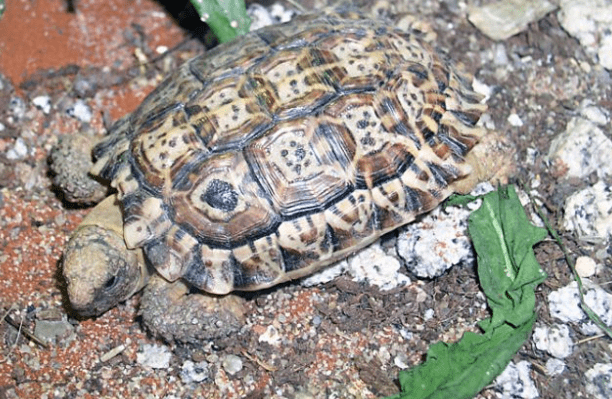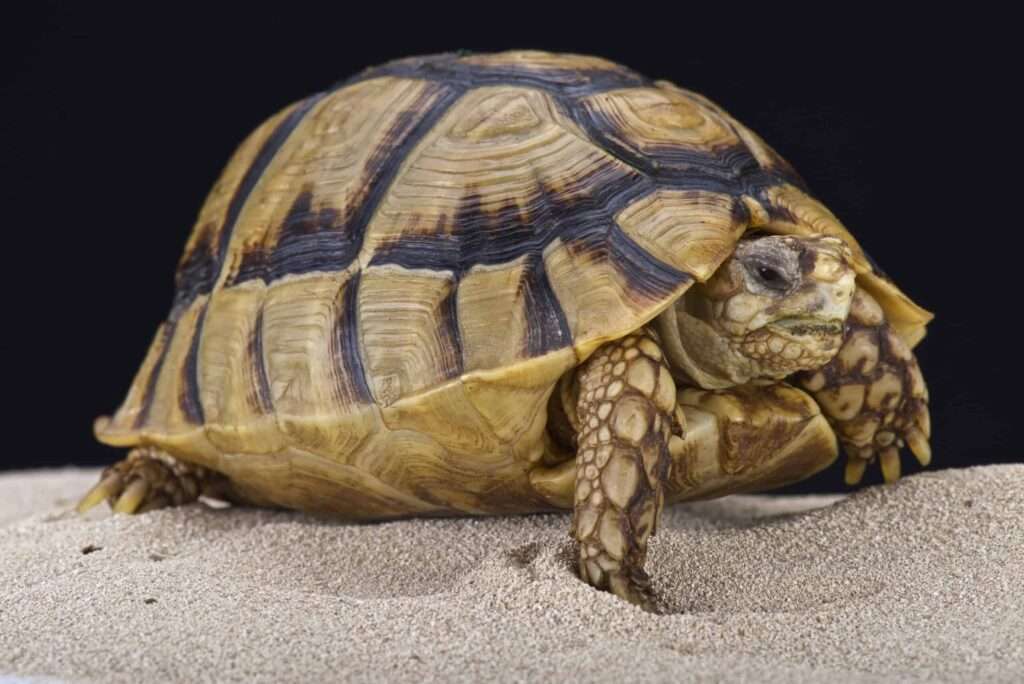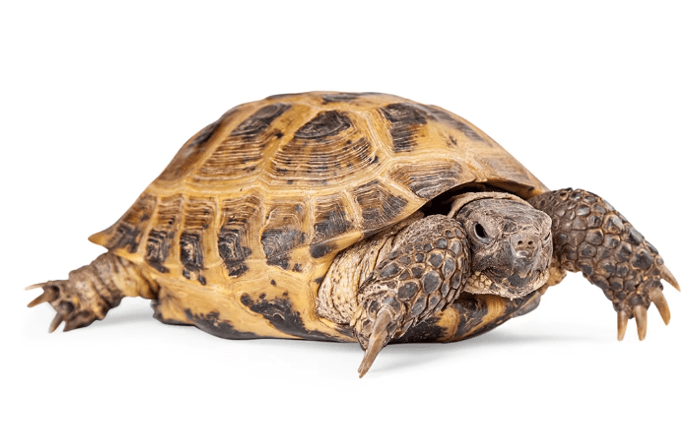
Description
A species of tortoise that is indigenous to the southwest United States and northwest Mexico is the desert tortoise (Gopherus agassizii). A male Desert tortoise is distinguished from a female by having a longer gular horn and a concave plastron (bottom shell). Compared to females, males also have longer tails. Their high-domed shells range in colour from greenish-tan to dark brown. In order to maintain thermoregulation, often known as maintaining internal temperature, Desert tortoises need space for their lungs, which is provided by the high domes of their shells. Their front limbs are flattened and contain sharp, claw-like scales. Legs on the back are longer and more slender.
Habitat
Native to the Mojave and Sonoran Deserts in the southwest United States, northwest Mexico, and the Sinaloan thorn scrub, desert tortoises can be found there. They can be found in southern Nevada, western Arizona, southeast California, southwest Utah, and southern Nevada. Sand flats and rocky hillsides are just a few of the diverse places that desert tortoises call home. For alluvial fans, washes, and canyons where better soils for building dens might be found, they favour the Mojave Desert. They can also be found in valleys, microphyll woods, and tropical deciduous forests.
Behavior
In order to maintain their body temperature and stop water loss, desert tortoises spend the most of their life in burrows, rock shelters, and pallets. Burrows are tunnels that animals, such as desert tortoises, dig into the ground. Compared to females, males typically occupy deeper burrows. Every year, tortoises use between 5 and 25 different burrows. Other animals, birds, reptiles, and invertebrates all share their burrows. Up to 23 Desert tortoises, typically of opposing sexes, can live in one burrow. These turtles’ activity varies by region, reaching its peak in the Mojave Desert in late spring and in the Sonoran Desert in late summer to early fall. Some populations see two activity peaks year.
Winter is the time when desert tortoises brumate, roughly from November through February to April. Juveniles emerge from brumation earlier than adults, while females start brumation later and emerge earlier than males. In the spring and autumn, desert tortoises are frequently active in the early morning and late at night. In the summer, they are occasionally active in the comparatively warm afternoons of winter. Desert tortoises can walk up to 660 feet (200 m) every day, despite spending the most of their time in the shelter. Foraging, moving between burrows, and perhaps mate-hunting or other social behaviors take place during this period. The most of the time, desert tortoises live alone. Although they might cluster with other tortoises in the same location to brumate, they may share a burrow. They use head-bobs, growls, hisses, pops, and poink sounds to communicate.

Keeping as Pet
Cage Size
For an adult tortoise, outside enclosures should be at least 18 square feet in size.
Substrate
It is preferred to use compacted organic topsoil or outside natural soil. Alternately, bedding made from a combination of cypress mulch and coconut fiber can be utilized. Avoid using gravel, sand, wood shavings, and reptile bark because they can be mistakenly swallowed and their dust might irritate the respiratory system. Although rabbit pellets have been used, employ caution because this substrate readily takes on mold. For the tortoise to be able to burrow, surfaces must be at least 3 to 5 inches deep or deeper.
Cage Furnishings
For indoor tortoises, shelter should be given, such as a hide or cave, and for outdoor tortoises, a man-made burrow.
Temperature
85-88°F during the day, 75-80°F at night, and 95-100°F during the daytime. Use a heat lamp to provide heat indoors. To create a temperature gradient, position the bulb such that it is off to one side of the enclosure. To ensure proper temperatures, the use of a thermometer and thermostat is advised.
Diet and Water
Herbivores, or those who consume plants, are desert tortoises. They need meals rich in fibre for wholesome development and digesting. Their main food sources should be weeds and grasses. Providing the tortoise with access to grassy areas where they may graze is the simplest method to achieve this. As an alternative, grass hay such as Timothy, Bermuda, or orchard grass hays can be offered. Many tortoises will adore edible bushes and garden plants that can be placed in the enclosure. The importance of weeds and local shrubs on developing young tortoises cannot be overstated.
Never provide meat, insects, dog or cat food, or monkey crackers to your desert tortoise. These high-protein diets will cause kidney problems and shell deformities.
It’s crucial to restrict access to water. We advise giving the tortoise modest warm water soaks for 15 to 30 minutes once or twice a week in place of a water bowl. As a result, they will be more likely to drink and completely empty their bladder, which will aid in preventing bladder stones.
A calcium carbonate powder supplement, such as ReptiCal, should be added to the diet of desert tortoises kept indoors or juvenile tortoises who are growing quickly.
Table





